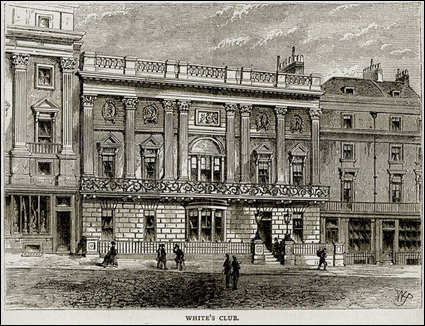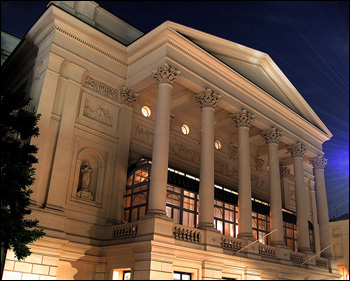This is a somewhat subjective term often used in historical romances to describe the hero. Webster defines a rake as “a dissolute person; a libertine” — in other words, not a very nice character. In romance novels, however, a rake seldom exhibits behavior that puts him beyond the pale. The term “rake” is most often used in the same way as “playboy” or “womanizer” but without the other implications of drinking, debauchery, and general lechery which inform the literal definition. A typical rakish hero will often have a number of women in his past, but the love of one special woman will cause him to give up the field forever, eg Jack in A Change of Heart or Tony in Once a Scoundrel.
Archives
1801
Two of Candice’s book are set in 1801: Once a Dreamer and Once a Scoundrel.
All links are to Wikipedia entries.

The Union Jack becomes the new flag of the United Kingdom in 1801, incorporating the Cross of St. George (England), the Cross of St. Andrew (Scotland), and the Cross of St. Patrick (Ireland).
Government, Politics, and War:
- January 1: the Act of Union with Ireland creates the United Kingdom.
- February 4: The government of William Pitt collapses over the issue of Catholic emancipation. Pitt had made veiled promises of emancipation in order to secure the Act of Union, but George III would not support it, and Pitt resigned.
- February 16: The Treaty of Lunéville, between France and the Holy Roman Empire, is signed, giving France control up to the Rhine and the French client republics in Italy and the Netherlands. Britain is now the sole nation fighting against France.
- March 4: Thomas Jefferson becomes the third President of the United States.
- March 14: Henry Addington becomes Prime Minister.
- March 23: Tsar Paul I of Russia is assassinated. He is succeeded by Tsar Alexander I.
- April 2: At the Battle of Copenhagen, Lord Nelson deals a death blow to the League of Armed Neutrality (Russia, Denmark, Sweden, and Prussia) with his destruction of the Danish fleet. When he returns to England in June, Nelson is elevated to a viscount.
- June 27: Cairo falls to British troops.
- July 6: The French fleet defeats the British fleet at the Battle of Algeciras.
- September 30: The Treaty of London is signed, a preliminary peace treaty ending the war between France and Britain.
Society and Social History:
- English horse racing at Goodwood is introduced by Charles Lennox, Duke of Richmond.
- January: Emma Hamilton gives birth to the illegitimate daughter of Lord Nelson.
- March 10: England conducts its first census.
- March: The London Stock Exchange is founded.
- April: The U.S. Library of Congress is founded.
Literature, Journalism, and Publishing:
- Maria Edgeworth’s Belinda is published.
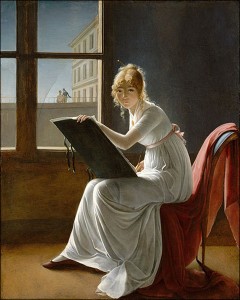
Portrait of a Young Woman Drawing by Marie-Denise Villers. (Click on image to read more about it and to see a larger version.)
Art, Architecture, and Design:
- Architects Charles Percier and Pierre-François-Léonard Fontaine publish the Recueil de décorations intérieures, a compilation of drawings of contemporary design that will set the standard for the Empire style of interior decoration that spreads throughout Europe.
- Lord Elgin, with permission of the Turkish government that controls Athens, begins the removal of sculptured portions of the Parthenon, a task that takes five years to complete.
- Marie-Denise Villers paints Portrait of a Young Woman Drawing, thought to be a self-portrait.
- June 28: Francis Wheatley, English portrait and landscape painter, dies at age 54.
Music:
- Beethoven completes the “Moonlight Sonata” (Piano Sonata No. 14 in C-sharp minor, Opus 27).
- Joseph Haydn completes his oratorio, The Seasons.
Science and Industry:
- Joseph-Marie Jacquard develops the Jacquard Loom, in which holes strategically punched in a pasteboard card direct the movement of needles, thread, and fabric.
- Ultraviolet radiation is discovered by Johann Wilhelm Ritter.
- August: The West India Docks open after a two-year design and construction project by William Jessop. Built on the Isle of Dogs, they are the first large wet docks built in the Port of London, and can accommodate 600 ships.
- December: Richard Trevithick builds and demonstrates the first steam-powered road locomotive.
White’s Club
The premier gentleman’s club of the Regency is also the oldest in London, and has its origins in White’s Chocolate House, which opened in 1693.
In 1736, White’s began to operate as a private club on St. James’s Street in the site now occupied by Boodle’s. Four years later it moved across the street to larger premises, which burnt down in 1753. The club then relocated in a building at the top of St. James’s, where it still stands. Shortly after the original club was formed, everyone wanted in and the rush for membership became overwhelming. A second club was formed called the “Young Club.” Vacancies in the original “Old Club” were filled by members of the Young Club. The two clubs were finally merged into one in 1781. White’s and other exclusive gentlemen’s clubs in London used a method of voting for proposed new members whereby a system of black and white balls were deposited, in secret by each election committee member, into a special box. A single black ball was sufficient to deny membership. Hence the term “blackballed.” In 1811 a bow window was added to the facade. It was in this window that Beau Brummell sat and held court until his downfall in 1816, passing judgment on passersby, with his inner circle, including Lord Alvanley, seated beside him. After Brummell left England, Alvanley took over the seat of privilege in the bow window.
White’s continues to be an exclusive club. King Charles is a member, as is William, Prince of Wales. Former Prime Minister David Cameron was a long-time member, but resigned in 2008, ostensibly in protest at the club’s refusal to admit women, though he still visits the club from time to time. Queen Elizabeth was allowed inside in 1991 and 2016 (how terribly modern of them), and in celebration of her Platinum Jubilee in 2022, the Club actually held special dinners where wives of members were allowed. Other than that special occasion, which caused considerable controversy among some members, it is still a males-only stronghold.
Covent Garden Theatre
From the 1660s until the mid-19th century there were only two patent theatres in London: the Theatre Royal, Covent Garden and the Theatre Royal, Drury Lane.
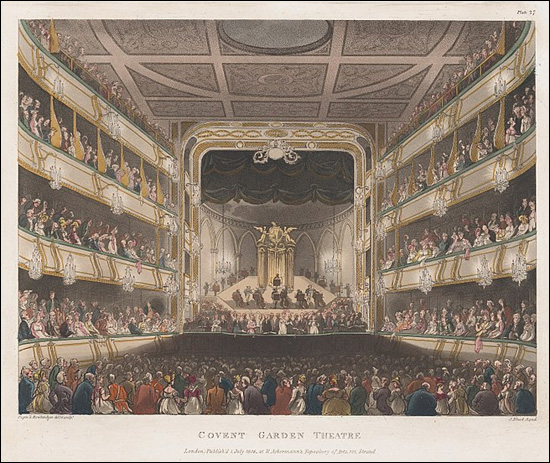
“Covent Garden Theatre” by Thomas Rowlandson and Auguste Pugin from Microcosm of London, 1808. Collection of Candice Hern.
Only these theatres were allowed to perform spoken drama, i.e. plays without music, dance, or pantomime. The first theatre built on the site of the ancient Covent Garden was opened in 1732. Despite the frequent interchangeability between the Covent Garden and Drury Lane companies, competition was intense, often presenting the same plays at the same time. The first ballet was performed at Covent Garden in 1734, and Handel presented his first season of opera in 1735. (He gave regular seasons there, with operas and oratorios, until his death in 1759.) The theatre burned down in 1808, and among its losses was Handel’s organ, seen in the image above.
The second theatre on the site, designed by Robert Smirke, opened in September 1809. Its interior is shown in the print, above, its exterior in the print below.
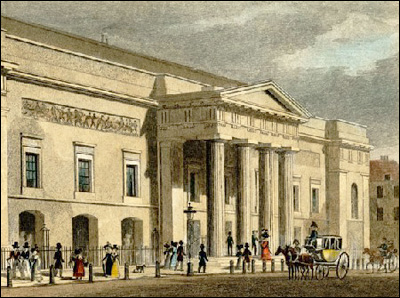
Covent Garden Theatre, published in Metropolitan Improvements or London in the Nineteenth Century, 1827.
The Old Price Riots took place shortly afterward, in protest over the increase in ticket prices at the new theatre. Entertainments were varied. Plays, operas, and ballets were performed, as well as variety acts like the clown Grimaldi.
Smirke’s building burnt to the ground in 1857 and was rebuilt the following year.
The current structure retains the façade, foyer, and auditorium from 1858, but little else since considerable reconstruction in the 1990s. It is now known as the Royal Opera House and is home to both the Royal Opera and the Royal Ballet.

